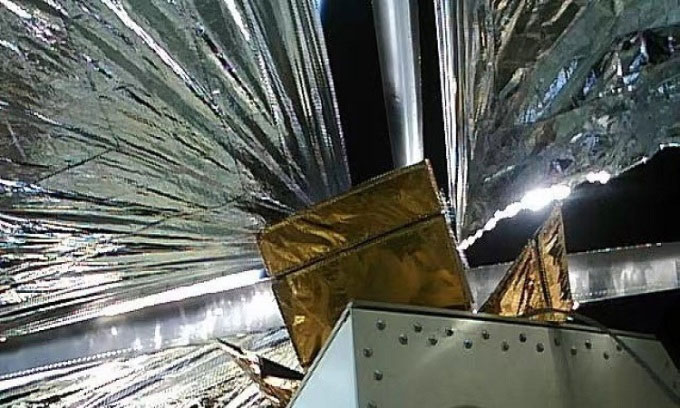China successfully opened the sail to recover missiles in orbit

The sail mounted on the Long March 2 rocket helps the rocket's final stage fall to Earth faster.
The sail spans 25m2 wide when fully opened and is extremely thin, only 1/10th the diameter of a human hair, according to Science and Technology Daily. This kite-like membrane is designed to increase atmospheric drag and prompt the 300 kg rocket's final stage to fall rapidly out of orbit. The Long March 2 rocket was used to put a remote sensing satellite into orbit last month and became space junk after that. The towing sail is the largest of its kind that China has developed in an attempt to tackle the increasingly common problem of space junk.
An estimated one billion pieces of junk are floating around the Earth, two-thirds of which are in low orbit where most spacecraft operate. Small constellations like SpaceX's Starlink and Amazon's Kuiper raise concerns about a future space junk crisis.
Towed sails could become a promising solution to the space junk problem due to their low cost and mature technology, which can be used with any satellite in low Earth orbit. Highly flexible and ultra-lightweight, the towing sail can be folded and mounted on the spacecraft before launch. They will then automatically unfold at the end of the mission, making it much faster to recover ships than during a natural fall.
For example, a 15kg satellite operating at an altitude of 700km could stay in orbit 120 years after the mission ends. But a 2m2 wide sail can reduce the time to less than 10 years. The towing sail mounted on the Long March 2 rocket will help the final stage fall through the Earth's atmosphere within 2 years. The device was developed by the Shanghai Academy of Space Flight Technology under the China Aerospace Science and Technology Corporation. Experiments with small satellites around the world have laid a solid foundation for the production and use of tow sails on an industrial scale.
The Long March 2 rocket launched on June 23 from the Xichang Satellite Launch Center in southwestern China. The rocket carries three remote sensing satellites into low Earth orbit to conduct scientific experiments, survey soils and resources, estimate agricultural productivity, and prevent natural disasters.
- SpaceX successfully launched the SES-9 satellite into orbit, failing to land missiles on barges
- China developed missiles that could launch from aircraft
- Monsters ate a long, sharp sword that hunted fast ocean records
- China is about to have nuclear missiles that can
- China successfully tested the new supersonic rocket that made the US worried about it
- Chinese missiles dropped Brazilian satellites
- Russia successfully tested missiles' unable to intercept
- Vinasat-2 has been on orbit
- Proton Russian missiles successfully put American satellites into orbit
- China successfully tried the satellite fueling system right on orbit
- China has a breakthrough in space rocket
- SpaceX launches and successfully recovers Falcon boosters 9
 Van Allen's belt and evidence that the Apollo 11 mission to the Moon was myth
Van Allen's belt and evidence that the Apollo 11 mission to the Moon was myth The levels of civilization in the universe (Kardashev scale)
The levels of civilization in the universe (Kardashev scale) Today Mars, the sun and the Earth are aligned
Today Mars, the sun and the Earth are aligned The Amazon owner announced a secret plan to build a space base for thousands of people
The Amazon owner announced a secret plan to build a space base for thousands of people